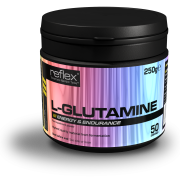Greetings true believers
With the new series of articles on Designer Superhero Workouts just beginning; I thought it only wise to give you some handy tips and advice to help you get the most from your workouts.
That’s right, beloved reader, today we learn from that diverse gang of Super Heroes, the X-Men. Thus, Your friendly neighbourhood Rogue Advisor will be sciencing you upside the head mutant style.
So what can we learn from these genetically mutated folk?

We can learn a lot of handy training tips and tactics from these diverse and over-the-top politically correct chaps.
Periodization
What’s this periodization business?
Periodization can be defined as a system for program design that plans appropriate cycles and training phases. The system used in the Designer Superhero Workouts.
The human machine, being what it, is an incredibly adaptive organism; quickly responding to its input. You lift heavy you get strong. You stretch you’ll get flexible. You run for hours upon hours per day, you will have improved cardiovascular endurance.
But because it adapts to the input, it will become complacent, thus reducing the results. When this happens things need to be switched around a bit, to ‘shock’ the body into having to adapt again, producing new results. Do you think the X-Men do the same training day in day out in the danger room? Nope.
It has been time and time again proven for success in achieving training goals and has a track record of over 50 years of development. Research has confirmed that periodization has the ability to produce significantly better results than straight set training or normal progression type training. Michael Jordan, Muhammad Ali, Usain Bolt, Babe Ruth, Tiger woods, and Bruce Lee have all used this wonderful training tactic. It also provides the ultimate training log. Looking back on a year’s periodized training will really give clarity on how much you have accomplished over that time.
Program Design
Any good training programme should be considered as ongoing and therefore broken down into calendar based blocks of time based periods that usually termed as ‘cycles’.
During each cycle prioritize working on the attributes which will benefit the athlete. Within these cycles we have Macrocycles, planning the overall outline of the program and commonly lasting for three-month periods, give or take, depending on the individual athlete’s goals.
Macrocycles are then, in turn, broken down again into smaller more manageable segments called Mesocycles.
Training Phases
These are the Mesocycles, which enable the athlete to efficiently track their progress, maybe reassess their goals if necessary and tailor the routine to suit and desired changes; such as training tactics, nutrition, intensity etc. The cycles run from 3 to 12 weeks, but great yields can result from longer or shorter periods, dependant upon genetics, muscle fibre composition and already established attribute levels. A 3 to 8 week Mesocycle suits most people.
Hypertrophy phase: During this is the phase for the athlete will be most effective hitting a rep range between strength training and endurance training; that will stimulate all the different fibre types, thus, the greatest overall hypertrophy.
Strength / power phases: Characterised by extremely high levels of intensity, all-out short distance sprints, lifting extremely heavy but for very low reps or a three-minute round in the boxing ring.
The easiest transition between phases is from strength to power; gradually decrease the reps from the usual 8 down to a range of 1 to 6, whilst also removing some exercises to really focus on the core movements for power: such as barbell squats, deadlifts, bench press, bent-over barbell rows, military press etc.
Endurance phase: This phases consists of lower intensity but higher-volume workouts. Muscular and cardiovascular endurance will be the primary focus. It also functions as an experimental phase of sorts.
If there are new exercise techniques that need to be introduced, this is the phase for it. Given the low intensity, (weight usually), gives the athlete the opportunity to master them, the added repetitions required for the high-volume element.
Transitional phase: This is the transitional phase, to morph one phase into another. For example:gradually bringing the reps up when moving from a strength phase to an endurance phase, and visa versa.

Swimming is a fine example of ‘active rest’. I’m sure there are rules about adamantium claws in the swimming pool though.
Active rest: On ‘rest’ days it can sometimes be a good idea to get what is known as ‘active rest’, keeping you geared up athletically but recreationally.
Body-weight Exercises
If you wish to attain Beast-like agility, then add body-weight exercises as often as possible, like chin ups, pull-ups and bodyweight dips. When you can add extra resistance to those, you’ll be able to perform great feats of agility.
It’s common sense; let’s say you perform jumping squats whilst holding 2 dumbbells; when you get rid of the extra weight of the dumbbells, your jump height will be significantly higher.
You can also add a flexibility routine. A greater range of movement will facilitate greater dexterity.
Break it down and rebuild it
When Nightcrawler teleports, all of the atoms in his body disassemble, pass through another plane of existence, then reassemble at another point in space and time.
A similar process is occurring in your skeletal muscle when you are working out, the exertion of the training breaks the muscle down, actually damaging the tissue. The body then reacts to this by re-growth geared toward the new input.
This anabolic process occurs when you are resting and eating, that’s when the cells get reassembled. Once the skeletal muscle has been nicely broken down, even they haven’t travelled through another plane of existence, we still need to put them back together.
Thus we need . . .
“Recovery bub”
The sooner one can recover from a training session, the sooner one can train again, speeding up the results. That’s simple for Wolverine; he regenerates. It doesn’t matter how much he gets cut, smashed, pummelled, drinks or smokes; he never takes any lasting or permanent damage or even gains a scar.
So, bereft of mutant powers how can we get recovering at such a rate?
Protein: Already covered this in ‘The Asgardian Power-House‘, but a little more detail couldn’t hurt. Get plenty of it, from high quality sources. The reason for this is that the building blocks of protein are called amino acids, and they all have a different and vital function.
Human protein is formed from 20 amino acids that are found within proteins. Alanine, Arginine, Asparagine, Aspartic acid, Cysteine, Glutamic acid, Glutamine, Glycine, Histidine, Isoleucine, Leucine, Lysine, Methionine, Phenylalanine, Proline, Serine Threonine, Tryptophan, Tyrosine and Valine.
Humans can produce 10 of the 20 amino acids. The others must be supplied in the food. Failure to obtain enough of even 1 of the 10 essential amino acids, those that we cannot make, results in degradation of the body’s proteins—muscle and so forth—to obtain the one amino acid that is needed. Unlike fat and starch, the human body does not store excess amino acids for later use—the amino acids must be in the food every day.
Non-Essential amino acids: The 10 amino acids that are essential, those that can be converted by the liver from other nutrients are; alanine, asparagine, aspartic acid, cysteine, glutamic acid, glutamine, glycine, proline, serine and tyrosine. Tyrosine is produced from phenylalanine, so if the diet is deficient in phenylalanine, tyrosine will be required as well.
Essential amino acids: Are arginine, histidine, isoleucine, leucine, lysine, methionine, phenylalanine, threonine, tryptophan, and valine. This means we must consume them and / or supplement them in our diets. Supplementation may be the only option for some of these if you’re vegetarian and the only option if you happen to be vegan.
Glutamine

This is the stuff I’m talking about, the very brand that yours truly uses. It’ll have you recovering like Wolverine.
We’re going to focus on one really important one for regeneration. Glutamine plays a role in a variety of biochemical functions, including: Protein bio-synthesis, as any other of the proteinogenic amino acids, regulation of acid-base balance in the kidney by producing ammonium, nitrogen donation for many anabolic processes including the synthesis of purines, carbon donation, as a source, refilling the citric acid cycle, nontoxic transporter of ammonia in the blood circulation.
Basically, whenever your body needs to make a repair, glutamine is the primary amino acid it goes to for most reparation chores. When any part of your body needs healing, say from a cut, recovery from a hangover or even sleep deprivation, it’s glutamine that gets used, and a great majority is extracted straight from the skeletal muscles. Unless there is some spare via supplementation. There aren’t many supplements worth spending your hard-earned or hard-stolen cash on but glutamine is without doubt one of them, get it in powdered form, for ease of absorption.
Sleep
Most of us don’t get anywhere near enough sleep, the regeneration magic happens then But when we are so busy in our daily lives with those vile afflictions known as day jobs, those wondrous affairs called social lives and those horrors we address as responsibilities; sleep is the first thing Sleep deprivation can have a big impact on our metabolism; slowing it down and hoarding fat and not getting enough sleep slows glucose metabolism by as much as 30 to 40 percent, causing even more fat gain. EEK
Eve Van Cauter, PhD , from the University of Chicago Medical School, studied the effects of three different durations of sleep in eleven men aged 18 to 27.
For the first three nights of the study, the men slept eight hours per night; for the next six nights, they slept four hours per night; for the last seven nights, they slept 12 hours per night. Results showed that after four hours of sleep per night, they metabolized glucose least efficiently. Levels of cortisol were also higher, which has been linked to memory impairment, age-related insulin resistance, and impaired recovery in athletes.
Van Cauter said that after only one week of sleep restriction, young, healthy males had glucose levels that were no longer normal and showed a rapid deterioration of the body’s functions. This reduced ability of the body to manage glucose is similar to those found in the elderly. This study shows that sleep deprivation can negatively impact physiology that is critical for athletic performance — glucose metabolism and cortisol status.
While no one completely understands the complexities of sleep, this does indicates that sleep deprivation can lead to decreased activity of human growth hormone (which is active during tissue repair), and decreased glycogen synthesis.

Psylocke demonstrates sleeping. Never mind showing off all the psychic abilities and martial skills, eh?
So how much sleep is required?
It going to differ from person to person, but the general consensus is 8 hours of uninterrupted sleep, more for is required for athletes due to greater physical exertion. A minimum of 6, preferably 7, and if you’re raining hard 8 to 9 hours.
Some of our genes act as internal clocks and release hormones according to cycles called circadian rhythms, which are triggered by darkness and light and alternate over 24-hour periods. When we mess with these rhythms by not getting enough sleep, our metabolism of glucose declines, and our level of cortisol increases. Further, sleeping for long stretches is naturally anabolic.
During deep sleep, our bodies release growth hormone, which stimulates the healing and growth of muscle and bone. So while it’s possible to push through a lack of sleep during any one day, proper sleep helps athletes by boosting areas of performance that require cognitive function, reaction time, hand-eye coordination and of course it aids recovery from grueling workouts.
Anything else? It is a pretty big team to learn from
The mind-muscle-connection
Great things can be accomplished with strong focus, concentration and visualisation. A technique utilised by many athletic pros to maximize muscle and performance. By developing a strong ‘mind-muscle connection’ ,this connection is made by visualizing the muscle being trained and focusing on the feeling of it working through its complete range of motion during each rep.
When applying the technique don’t think about where you feel the muscular stimulus, think about where you’re supposed to feel the stimulus. For example; during press ups the muscle that should be shifting all the weight are the pectoralis major, but a lot of people end up focusing too much on the arms, triceps specifically, which are only assisting the movement. Instead you must focus on contacting the pectorals thereby bringing the arms together and forward, the triceps assisting only to extend the elbow joint. Continue with this thought process during the negative phase of the movement, focusing on the feeling of the pectorals stretching.
Keeping your mental focus channeled in this manner will direct the majority of stress to the target muscles of your chest, maximizing muscular stimulation. It sounds daft, far-fetched even a little sci-fi but believe in your Rogue Advisor, beloved reader, the mind-muscle connection is the real deal.
Visualization
Some athletes routinely use visualization techniques in both training and competition. Those who’ve used these techniques have cultivated not only a competitive edge, but also found renewed mental awareness, and a heightened sense of focus.
Visualization is also referred to as guided imagery, mental rehearsal, mediation, etc. Regardless of the term applied, the techniques and concepts are the same. Visualization is the mental process of creating an image or intention of what you desire.
“Throughout my bodybuilding career, I was constantly playing tricks on my mind. This is why I began to think of my biceps as mountains, instead of flesh and blood. Thinking of my biceps as mountains made my arms grow faster and bigger than if I’d seen them only as muscles.” – Arnold Schwarzenegger
This technique can be used to increase the ‘intent’ of the result of a competition or training session. By visualizing the desired scene, complete with reverie of a previous best performance or a future target, the athlete is then ‘steps into’ that feeling. While imagining these scenarios, the athlete will imagine in perfect detail, all the myriad sensations of the way it feels to perform in the desired way, or the results wanted from that training session.
And finally
No really. It does wonders for you. Every time you get stressed out, start vexing or get your raging bellyache on, you get a massive surge of nasty old cortisol, which breaks down muscle tissue. So when you have to skip a meal or a workout, don’t be miffed but don’t use cortisol as an excuse to slack off either. Temperature also affects testosterone levels. Everyone knows that guys who sleep in the cold have a higher sperm count right? That’s because testosterone is boosted when the testicles are at just the right chilly temperature. Yay.
Until next time. Stay informed.









